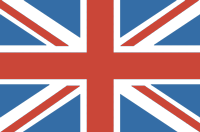Keir Starmer wants and needs economic growth to pay for Labour’s aspirations. The same can be said for all prime ministers, as they then get to preside over rising living standards and improving public services. With the pound rising this week in response to the sheer predictability of the upcoming general election, he’s in a promising position.
But growth in the UK is driven much more by external events than it is by almost anything which governments do domestically. One way of looking at this is to compare the evidence on economic growth since 1949 under Conservative and Labour governments. The Tories have been in power for 47 of those years and Labour for 28.
The record of the two parties is effectively identical — growth averaged 2.2% under Labour and 2.5% under the Conservatives — but it is a completely different matter when comparing the years immediately following an external shock with the rest. For instance, Harold Wilson inherited a very difficult situation in 1974, when oil prices had just quadrupled and provided a massive shock to Western economies. By the time Labour next faced the electorate in 1979, growth had averaged a miserly 1% and the party was duly booted out.
Thanks to the financial crisis of the late-2000s, during the 2008-12 period there was no growth at all, while the Covid-19 pandemic and the Ukraine war were followed by another energy price shock in 2022. All these events put the dampeners on growth, to put it mildly, and the consequences of the latter two are still working their way through the system. The destruction of the public finances by disastrous lockdown policies has thereby created a severe constraint on Labour’s proposed spending plans.
Yet, despite everything, confidence is slowly returning. As inflation falls real wages are rising, boosting consumer spending power. The latest business confidence index of the ICAEW shows a significant improvement on a year ago, rising to its highest level since the pandemic. Capitalist economies are very resilient beasts, and usually return to growth after a shock purely of their own accord.
So is Starmer just very lucky? Although the world environment remains uncertain, the economy is bouncing back. Amid the Conservative implosion and Reform UK’s splitting of the Right-wing vote, talk is of him surpassing Tony Blair’s huge victory in 1997, in terms of the number of Labour seats if not the share of the vote.
But the parallels with 1997 soon run out. Then, Ken Clarke — the Conservative chancellor under John Major — had done Blair and Gordon Brown’s work for them. Following the short recession of the early Nineties, the economy had boomed. The average annual growth rate from 1993 to 1997 was 3.1%; in the election year itself, 1997, the economy expanded by a massive 4.9%. Brown pledged to change very little in Labour’s first few years of power, and the momentum continued, with an average of 3.4% growth between 1998-2000.
Now that sterling has strengthened to a two-year high against the euro, further rises are widely expected given the current political turmoil in France. The UK, in comparison, is a potential haven of stability.
But you can always have too much of a good thing. A Starmer government could face the reverse of the positive shock which sterling’s ejection from the European Exchange Rate Mechanism (ERM) in the early Nineties gave to the economy. Labour, like every UK government since WWII, is at the mercy of external events.










Join the discussion
Join like minded readers that support our journalism by becoming a paid subscriber
To join the discussion in the comments, become a paid subscriber.
Join like minded readers that support our journalism, read unlimited articles and enjoy other subscriber-only benefits.
Subscribe